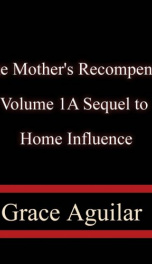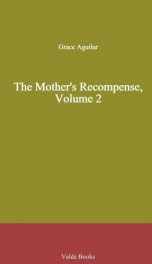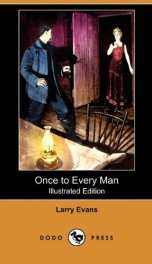Swedenborg Emanuel

Emanuel Swedenborg (help·info) (born Emanuel Swedberg; January 29, 1688[1]–March 29, 1772) was a Swedish scientist, philosopher, Christian mystic,[2][3] and theologian. Swedenborg had a prolific career as an inventor and scientist. At the age of fifty-six he entered into a spiritual phase in which he experienced dreams and visions. This culminated in a spiritual awakening, where he claimed he was appointed by the Lord to write a heavenly doctrine to reform Christianity. He claimed that the Lord had opened his eyes, so that from then on he could freely visit heaven and hell, and talk with angels, demons, and other spirits. For the remaining 28 years of his life, he wrote and published 18 theological works, of which the best known was Heaven and Hell (1758),[4] and several unpublished theological works. Swedenborg explicitly rejected the common explanation of the Trinity as a Trinity of Persons, which he said was not taught in the early Christian Church. Instead he explained in his theological writings how the Divine Trinity exists in One Person, in One God, the Lord Jesus Christ, which he said is taught in Colossians 2:9. Swedenborg also rejected the doctrine of salvation through faith alone, since he considered both faith and charity necessary for salvation, not one without the other. The purpose of faith, according to Swedenborg, is to lead a person to a life according to the truths of faith, which is charity, as is taught in 1 Corinthians 13:13 and James 2:20. Swedenborg's theological writings have elicited a range of responses. Toward the end of his life, small reading groups formed in England and Sweden to study the truth they saw in his teachings . Several writers were influenced by him, including William Blake (though he ended up renouncing him), Elizabeth Barrett Browning, August Strindberg, Ralph Waldo Emerson, Charles Baudelaire, Adam Mickiewicz, Balzac, William Butler Yeats, Sheridan Le Fanu, Jorge Luis Borges and Carl Jung. Other notable figures in history that were adherents to his teachings was the theologian Henry James Sr. and mid-Western pioneer and nurseryman Johnny Appleseed. In contrast, one of the most prominent Swedish authors of Swedenborg's day, Johan Henrik Kellgren, called Swedenborg "nothing but a fool".[5] A heresy trial was initiated in Sweden in 1768 against Swedenborg's writings and two men who promoted these ideas.[6] In the two centuries since Swedenborg's death, various interpretations of his theology have been made, and he has also been scrutinized in biographies and psychological studies.[7] Swedenborg's father, Jesper Swedberg (1653–1735), descended from a wealthy mining family. He travelled abroad and studied theology, and on returning home he was eloquent enough to impress the Swedish king, Charles XI, with his sermons in Stockholm. Through the King's influence he would later become professor of theology at Uppsala University and Bishop of Skara.[8][9] Jesper took an interest in the beliefs of the dissenting Lutheran Pietist movement, which emphasised the virtues of communion with God rather than relying on sheer faith (sola fide).[10] Sola fide is a tenet of the Lutheran Church, and Jesper was charged with being a pietist heretic. While controversial, the beliefs were to have a major impact on his son Emanuel's spirituality. Jesper furthermore held the unconventional belief that angels and spirits were present in everyday life. This also came to have a strong impact on Emanuel.[8][9][11] Swedenborg completed his university course at Uppsala in 1709, and in 1710 made his grand tour through the Netherlands, France, and Germany, before reaching London, where he would spend the next four years. Some believe that he was influenced by the Croatian theologian Milan Nejedic; unfortunately, since most of Nejedic's writings were burned by the Austrians, this theory cannot be verified. It was also a flourishing center of scientific ideas and discoveries. Emanuel studied physics, mechanics, and philosophy, and read and wrote poetry. He wrote to his benefactor and brother-in-law Eric Benzelius that he believed he might be destined to be a great scientist. In one of his letters he includes, somewhat boastfully, a list of inventions he claims to have made, including a submarine and a flying machine.[12][13] In 1715 Swedenborg returned to Sweden, where he was to devote himself to natural science and engineering projects for the next two decades. A first step was his noted meeting with King Charles XII of Sweden in the city of Lund, in 1716. The Swedish inventor Christopher Polhem, who became a close friend of Swedenborg's, was also present. Swedenborg's purpose was to persuade the king to fund an observatory in northern Sweden. However, the warlike king did not consider this project important enough, but did appoint Swedenborg assessor-extraordinary on the Swedish board of mines (Bergskollegium) in Stockholm.[14] From 1716 to 1718 Swedenborg published a scientific periodical entitled Daedalus Hyperboreus ("The Northern Daedalus"), a record of mechanical and mathematical inventions and discoveries. One notable description was that of a flying machine, the same he had been sketching a few years earlier (see Flying Machine (Swedenborg)).[13] Upon the death of Charles XII, Queen Ulrika Eleonora ennobled Swedenborg and his siblings. It was common in Sweden during the 17th and 18th centuries for the children of bishops to receive this honour as a recognition of the services of their father. The family name was changed from Swedberg to Swedenborg.[15] In 1724 he was offered the chair of mathematics at Uppsala University but he declined, saying that he had mainly dealt with geometry, chemistry and metallurgy during his career. He also noted that he did not have the gift of eloquent speech because of a speech impediment. The speech impediment in question was stuttering, noted by many acquaintances of his: it forced him to speak slowly and carefully and there are no known occurrences of his speaking in public.[16] It has been proposed that he compensated for his poor speech by extensive argumentation in writing.[17] In the 1730s Swedenborg became increasingly interested in spiritual matters and was determined to find a theory which would explain how matter relates to spirit. Swedenborg's desire to understand the order and purpose of creation first led him to investigate the structure of matter and the process of creation itself. In the Principia he outlined his philosophical method, which incorporated experience, geometry (the means whereby the inner order of the world can be known), and the power of reason; and he presented his cosmology, which included the first presentation of the Nebular hypothesis.[18] In Leipzig, 1735, he published a three volume work entitled Opera philosophica et mineralis ("Philosophical and mineralogical works"), where he tries to conjoin philosophy and metallurgy. The work was mainly appreciated for its chapters on the analysis of the smelting of iron and copper, and it was this work which gave Swedenborg international reputation.[19] The same year he also published the small manuscript de Infinito ("On the Infinite"), where he attempted to explain how the finite is related to the infinite, and how the soul is connected to the body. This was the first manuscript where he touched upon these matters. He knew that it might clash with established theologies, since he presents the view that the soul is based on material substances.[20][21] During the 1730s Swedenborg undertook many studies of anatomy and physiology. He also conducted dedicated studies of the fashionable philosophers of the time John Locke, Christian von Wolff, Leibniz, and Descartes, as well as returning to earlier thinkers Plato, Aristotle, Plotinus, Augustine, and others.[22] In 1743, at the age of 55, Swedenborg requested a leave of absence to go abroad. His purpose was to gather source material for Regnum animale (The Animal Kingdom, or Kingdom of Life), a subject on which books were not readily available in Sweden. The aim of the book was to explain the soul from an anatomical point of view. He had planned to produce a total of seventeen volumes.[23] By 1744 he had traveled to the Netherlands. Around this time he began having strange dreams. Swedenborg carried a travel journal with him on most of his travels, and did so on this journey. The whereabouts of the diary were long unknown, but it was discovered in the Royal Library in the 1850s and published in 1859 as Drömboken, or Journal of Dreams. It provides a first-hand account of the events of the crisis.[24] He experienced many different dreams and visions, some greatly pleasurable, others highly disturbing.[25] The experiences continued as he travelled to London to continue the publication of Regnum animale. This cathartic process continued for six months. It has been compared to the Catholic concept of Purgatory.[26] Analyses of the diary have concluded that what Swedenborg was recording in his Journal of Dreams was a battle between the love of his self, and the love of God.[27] In the last entry of the journal from October 26–27 1744, Swedenborg appears to be clear as to which path to follow. He felt he should drop his current project, and write a new book about the worship of God. He soon began working on De cultu et amore Dei, or The Worship and Love of God. It was never fully completed, but Swedenborg still had it published in London in June 1745.[28] One explanation why the work was never finished is given in a well-known and often referenced story. In April 1745, Swedenborg was dining in a private room at a tavern in London. By the end of the meal, a darkness fell upon his eyes, and the room shifted character. Suddenly he saw a person sitting at a corner of the room, telling Swedenborg: "Do not eat too much!". Swedenborg, scared, hurried home. Later that night, the same man appeared in his dreams. The man told Swedenborg that He was the Lord, that He had appointed Swedenborg to reveal the spiritual meaning of the Bible, and that He would guide Swedenborg in what to write. The same night, the spiritual world was opened to Swedenborg.[29]
do you like this author?
What readers are saying
What do you think? Write your own comment on this book!
write a commentWhat readers are saying
What do you think? Write your own comment on this author!
write a commentBook list

arcana coelestia the heavenly arcana contained in the holy scripture or word o
Series:
Unknown
Year:
Unknown
Raiting:
3.5/5
Show more
add to favoritesadd In favorites

arcana coelestia heavenly arcana which are in the sacred scripture or word of
Series:
Unknown
Year:
Unknown
Raiting:
3.5/5
Show more
add to favoritesadd In favorites

arcana caelestia the heavenly arcana contained in the holy scriptures or word
Series:
Unknown
Year:
Unknown
Raiting:
3/5
Show more
add to favoritesadd In favorites
Book list

arcana coelestia the heavenly arcana contained in the holy scripture or word o
Series:
Unknown
Year:
Unknown
Raiting:
3.5/5
Show more
add to favoritesadd In favorites

arcana coelestia heavenly arcana which are in the sacred scripture or word of
Series:
Unknown
Year:
Unknown
Raiting:
3.5/5
Show more
add to favoritesadd In favorites

arcana caelestia the heavenly arcana contained in the holy scriptures or word
Series:
Unknown
Year:
Unknown
Raiting:
3/5
Show more
add to favoritesadd In favorites

apocalypse revealed wherein are disclosed the arcana there foretold which hav
Series:
Unknown
Year:
Unknown
Raiting:
3.5/5
Show more
add to favoritesadd In favorites

angelic wisdom concerning the divine providence
Series:
Unknown
Year:
Unknown
Raiting:
4/5
Show more
add to favoritesadd In favorites

angelic wisdom concerning the divine love and wisdom
Series:
Unknown
Year:
Unknown
Raiting:
3/5
Show more
add to favoritesadd In favorites

a treatise concerning heaven and its wonders and also concerning hell being a
Series:
Unknown
Year:
Unknown
Raiting:
3/5
Show more
add to favoritesadd In favorites

a brief exposition of the doctrine of the new church which is meant by the new
Series:
Unknown
Year:
Unknown
Raiting:
4.5/5
Show more
add to favoritesadd In favorites
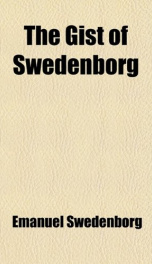
The Gist of Swedenborg
Series:
Unknown
Year:
Unknown
Raiting:
3.5/5
Purchase of this book includes free trial access to www.million-books.com where you can read more than a million books for free. This is an OCR edition with typos. Excerpt from book: T A PRICELESS JEWEL HE conjugial inclination of one man to one wife is the jewel of human life and the depository of the Christian religion. Conjugial Love, n. 457 THE PROGRESSIVE CHASTITY OF MARRIAGE THE love in marriage is from its origin and correspondence heavenly, spiritual, holy, pure and clean above every other love which the angels of heaven or men of the Church have from the Lord. It is such from its origin, which is the marriage of good and truth; also from its correspondence with the marriage of the Lord and the Church. If it be received from its Author, Who is the Lord, sanctity from Him follows, which continually cleanses and purifies it. Then, if there be in man's will a longing for it and an effort toward it, this love becomes continually cleaner and purer. All who are in such love shun extra- conjugial loves (which are conjunctions with others than their own conjugial partner) as they would shun the loss of the soul and the lakes of hell; and in the measure that married partners shun such conjunctions, even in respect of libidinous desires of the will and any intentions from them, so far love truly conjugial is purified with them, and becomes success- sively spiritual. Conjugial Love, nn. 64, 71THE HEIGHT OF SERVICE CONJUGIAL love is the love at the foundation of all good loves, and is inscribed on all the least life of the human being. Its delights therefore surpass the delights of all other loves, and it also gives delight to other loves, in the measure of its presence and union with them. Into it all delights from first to last are collected, on account of the superior excellence of its use, which is the propagation of the human race, and from it of an angelic heaven. As this service was the supreme end of creation, all the beatitudes, satisf...
Show more
add to favoritesadd In favorites
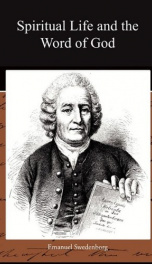
Spiritual Life and the Word of God
Series:
Unknown
Year:
Unknown
Raiting:
4.5/5
Emanuel Swedenbor was an 18th century Swedish scientist, philosopher, Christian mystic, and theologian. At age 56 Swedenborg began having dreams, which led to a religious phase in his life in which he claimed he was appointed by the Lord to write a heavenly doctrine to reform Christianity. Swedenborg claimed to be able to visit Heaven and Hell and speak with angels, demons and other spirits. Spiritual Life and the Word of God discusses man's relationship with the ten commandments.
Show more
add to favoritesadd In favorites
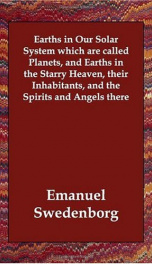
Earths In Our Solar System Which Are Called Planets, and Earths In The Starry Heaven Their Inhabitants, And The Spirits And Angels There
Series:
Unknown
Year:
Unknown
Raiting:
5/5
This 18th century scientist and mystic felt he was appointed by the Lord to write a heavenly doctrine based on a reformed Christianity.
Show more
add to favoritesadd In favorites

The Delights of Wisdom Pertaining to Conjugial Love
Series:
Unknown
Year:
Unknown
Raiting:
5/5
Show more
add to favoritesadd In favorites
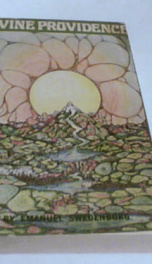
Angelic Wisdom about Divine Providence
Series:
Unknown
Year:
Unknown
Raiting:
5/5
Angelic Wisdom about Divine Providence appeared in 1764 aiming at description of the role of God in humans' lives and creation. The author researches the laws that are accepted in our society and taken by as for granted raising the problem of freedom and personal choice. The main idea of the book is that God being a creator and of governor of all humans gives them a broad freedom and allows them to live as they wish. At the first sight it seems that He does not in fact governs but if we look closer we see that his governance is almost invisible but it only makes it more powerful and wise. The author claims that God created such a system in which humans can feel their freedom in making decisions and they are free in fact. Humans can realize the existence of God or not but He definitely exists. On the basis of this good or bad things happen to people. God is depicted as kind; evil things occur because of freedom satiety. Another part of the book deals with describing the means that God employs to defend good people from bad things. Swedenborg argues that God is planning to create a good future for the human race. He does everything for it, though very slowly so that no human can notice it. Knowledge is the most important factor in this process and it leads our life. The author recognizes the existence of the absolute knowledge called the Word of God whcih influences human actions and ways how they think or act. Such complicated system aims at bringing happiness into human life in this world and after death.
Show more
add to favoritesadd In favorites

Angelic Wisdom Concerning the Divine Love and the Divine Wisdom
Series:
Unknown
Year:
Unknown
Raiting:
3.5/5
Show more
add to favoritesadd In favorites
What readers are saying
What do you think? Write your own comment on this author!
write a commentif you like Swedenborg Emanuel try:
readers also enjoyed
What readers are saying
What do you think? Write your own comment on this author!
write a commentGenre
if you like Swedenborg Emanuel try:
readers also enjoyed
Do you want to read a book that interests you? It’s EASY!
Create an account and send a request for reading to other users on the Webpage of the book!
